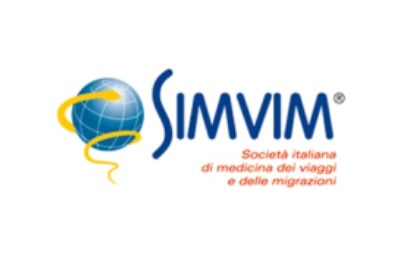Soft chancre
Soft chancre, also called chancroid, is a sexually transmitted disease of bacterial origin that causes papular lesions and genital ulcers.
The first description of the characteristics of soft chancre dates back to the 2nd century A.D. by the philosopher Celsus ("De re medica"), later encountered in Pliny the Younger ("Epistolae") and Galen ("De Tumoribus praeter natura"). However, none of them had ever highlighted the relationship with sexual intercourse: in fact, all of the subjects studied had discontinued their practice because of painful symptomatology.
In later times it was mistaken for the ulcerative lesion typical of syphilis. The first to clarify the difference between the two diseases was Philippe Ricord in 1845. It was not until 1889 that the Italian dermatologist Augusto Ducrey discovered the causative agent Haemophilus, which is why the bacterium bears his name.
CAUSES
The culprit is Haemophilus Ducreyi, a rod-shaped bacterium about 1-2 microns long, detectable in ulcer secretions in the form of chains in a typical arrangement that has been described as resembling a “school of fish”.
It is GRAM negative and makes its way through even very small skin lesions of the genital or cutaneous mucous membranes. It prefers tropical regions for its spread, so it is frequently encountered in African and Southeast Asian countries.
TRANSMISSION
The most common method of transmission is sexual intercourse with infected people, while infection with contaminated objects is much less common. The latter possibility has been defined as rare because the bacterium does not survive outside.
Transmission involves all types of sexual intercourse (vaginal, oral or anal), the exchange and use of contaminated sex toys, but also simple contact between genitals and from there it can be transmitted to other parts of the body.
GEOGRAPHICAL DISTRIBUTION
The most frequent cases have been found in tropical or developing countries.
International literature has described contained epidemics almost always related to prostitution-related sexual activities, which in history they were related to unprotected intercourse of individuals traveling either for tourism or work.
Sporadic cases in sexually abused boys or girls have also been described.
SYMPTOMS
The incubation period of chancroid ranges from 3 to 5 days, but can be as long as 10 days.
The initial phase is characterized by painful papules that break down to form mushy ulcers with a heavily reddened edge. Deep ulcers tend to cause tissue breakdown
The symptomatology also leads to involvement of the lymph nodes in the groin area, which swell and lead to the formation of the “bubo" an abscessal finding filled with purulent material. The skin in the area above the abscess becomes inflamed and then, in some cases, ruptures, giving rise to a fistulous pathway.
Localisation varies between male and female individuals. In men it is distributed between the glans, the urethral meatus but also at the scrotum and usually presents a single lesion. In women, on the other hand, it generally has more than one and is located on the labia majora and labia minora, but also in the region around the anus (and rarely on the vaginal or cervix walls).
The incidence is higher in male individuals. Contact with urine may generate pain as it is characterized by a high degree of acidity, and the subject may then have marked retention.
DIAGNOSIS
Diagnosis of chancroid is based first on clinical evaluation and later on a culture test or PCR (polymerase chain reaction).
Culture examination and microscopic identification are difficult practices compared to the resident microbial population of ulcers. The PCR test has been certified with 99% specificity, but there are few laboratories in Italy that perform the test.
Simultaneity with syphilitic infection (by spirochete Treponema Pallidum) has often been observed. Of course, the different incubation period and the fundamental differential diagnosis must be considered.
It is always important in differential diagnosis to keep in mind herpes simplex, syphilis and lymphogranuloma venereum. It is not to be forgotten that Haemophilus infections can increase the risk of HIV.
TREATMENT
If this condition is not treated, the lesions last for several weeks.
If treated, ulcers resolve with determination of depressed scarring. It should then be mentioned that in rare cases lymph node evolution may also require surgical drainage. Without treatment, ulcers can degenerate into serious complications.
Drug therapy involves the use of:
- Ciprofloxacin per os
- Azithromycin or erythromycin per os
- Ceftriaxone intramuscularly in cases of “giant” ulcers (about 2 cm or larger than the "dwarf” ones 0.5 cm or smaller).
Normally, contained progression can be seen within 3 to 4 days, and within 10 to 14 days definitive healing occurs. Erythromycin is recommended for pregnant or lactating women and ciprofloxacin should be avoided.
PREVENTION
Prevention as with other STDs involves:
- Avoiding unprotected intercourse with suspicious and/or infected people
- Correct use of condoms
- Use of condoms for the total duration of intercourse
- Use of condoms in oral intercourse
- Use of condoms to protect sex toys as well.
Upon returning from tropical regions, aware of having taken a sexual risk, it is advisable to see a dermatologist, to have precise indications on the investigations to be carried out and identify other possible STDs including chancroid.
The presence of current or previous papules that have evolved into mushy ulcers, redness, and pain with lymph node enlargement should not be overlooked; just one of the symptoms or previous lesions is important and should be reported to a specialist. Early intervention through accurate diagnosis can ensure a resolution of chancroid quickly and without any complications. This applies to every STD because every single time unprotected intercourse takes place there is a risk and it is important to travel but also to return in good health, for ourselves and for others.
Bibliography
- “La diagnostica delle infezioni sessuali” IDELSON GNOCCHI APRILE 2017 DELFINO
- “Infezioni trasmissibili sessualmente” IDELSON GNOCCHI NOVEMBRE 2015 NINO-DELFINO
- “Dermatologia e malattie sessualmente trasmesse” SAURAT-MASSON 2006
“Ulcera molle” Relazione Soc.It. di Andrologia e med. della sessualità 2020





